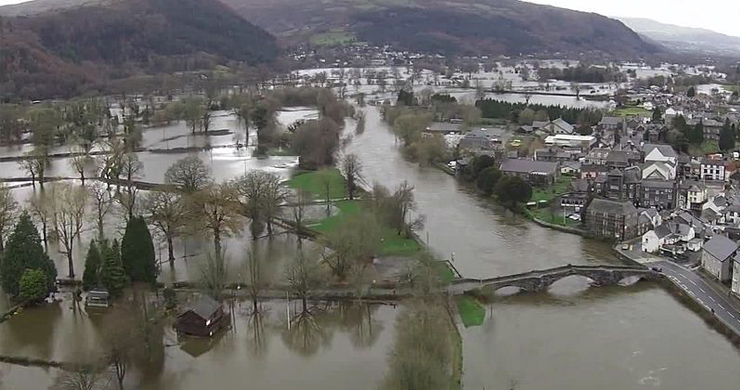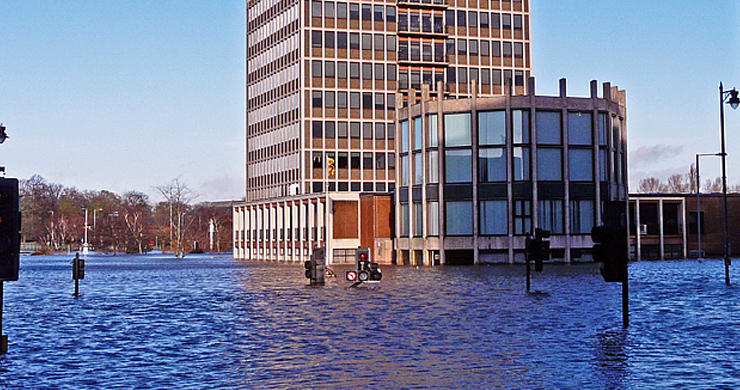What are the consequences and what we can do to reduce impacts of storms and floods?
Consequences
Consequences of storms are largely down to one (or both) of two things; wind and precipitation.
Wind is air moving from one place to another.
Precipitation is water which comes from the air to the surface, it includes:
| Includes | ||
| Rain | Snow | Sleet |
| Drizzle | Dew | Frost |
| Fog | Mist | Rime |
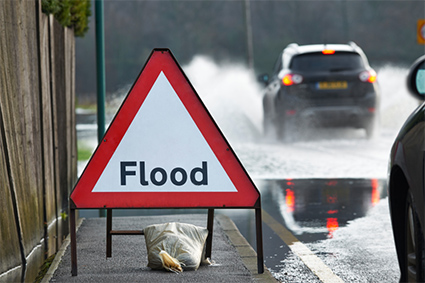
The biggest danger of high winds are when things are blown over; these can include trees, powerlines, chimneys and even lifting roofs off of buildings.
Recent UK storms have seen large objects such as sheds and large trampolines being lifted from the ground and as high as 20 metres into the air.
Falling trees can be dangerous to life but most impacts are when powerlines are brought down and power is cut to homes and businesses.
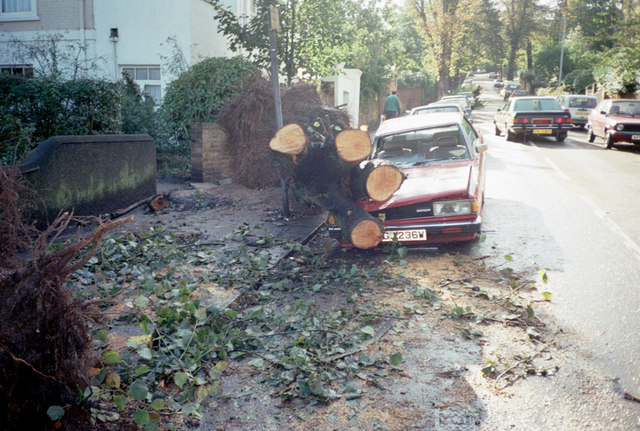
Image: Aftermath of the Great Storm of 1987 - David Wright © Wikimedia Commons under Creative Commons Attribution 2.0 Generic
The biggest risks from precipitation come from flooding as a result of heavy rainfall.
Snow and ice brings different risks cutting off transport routes and posing a risk of slips, falls and traffic accidents.
Who is responsible for flood protection?
The simple answer is everyone, most people would answer the government or the council but YOU are responsible for YOUR safety along with your parents and other family members.
The governments within the UK help through agencies such as Natural Resources Wales (NRW) in Wales and the Environment Agency (EA) in England. Local councils also have a role to play but the most important person is you!
When we think about preparing for flooding we think about big expensive schemes such as this one in York which failed during Christmas 2015 causing widespread flooding.
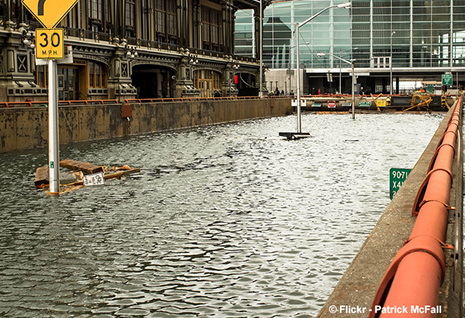
Here the local council are providing sandbags to build a temporary barrier and local people are being helped by members of the army to lay them out.
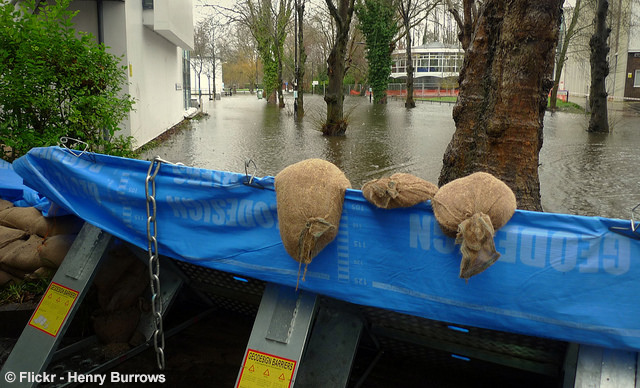
It is very important that river and stream channels are kept clear here we can see government workers involved in this but it is the land owners on either bank who actually own the river or stream and as such they have legal responsibilities.
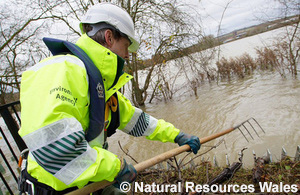
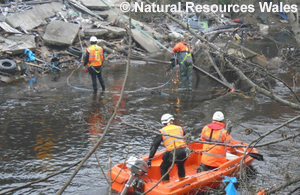
How can we prepare for flooding?
The NRW (Natural Resources Wales) website tells us to:
Check your flood risk on the NRW flood risk map. You can find out what the chance of flooding from rivers and the sea is in your local area on the flood map.
Natural Resources Wales - Click below
Find your school and home on the map to check for flood risk.
If you’re at risk, there are lots of things you can do to prepare before a flood happens including:
- Prepare a flood plan from one of the templates.
- Visit the NRW FloodAwareness Facebook page.
- Know what the flood codes mean and what to do if you receive one.
- View the flood warnings.
- Sign up for free flood warnings by phone, text or email.
Natural Resources Wales - Click below
Flood Alert
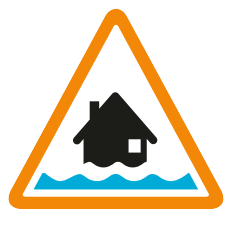
© Natural Resources Wales
What it means
Flooding is possible. Be prepared.
When is it used?
Between two hours and two days in advance of flooding.
What to do
Be prepared to act on your flood plan.
Prepare a flood kit of essential items.
Monitor local water levels and the flood forecast on the NRW website.
Flood Warning
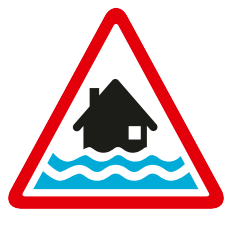
© Natural Resources Wales
What it means
Flooding is expected. Immediate action required.
When is it used?
Between half an hour and one day in advance of flooding.
What to do
Move family, pets and valuables to a safe place.
Turn off gas, electricity and water supplies if it is safe to do so.
Put flood protection equipment in place.
Severe Flood Warning
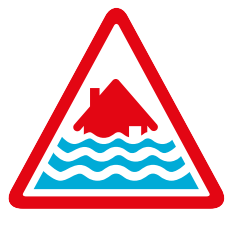
© Natural Resources Wales
What it means
Severe flooding. Danger to life.
When is it used?
When flooding poses a significant threat to life.
What to do
Stay in a safe place with a means of escape.
Be ready to leave your home.
Cooperate with the emergency services.
Call 999 if you are in immediate danger.
What to do during and after a flood
In the event of a flood the NRW website tells us to:
“to focus on your safety and the safety of your family”
If a flood is about to happen:
- If you have a flood plan, follow it.
- Tune into your local radio station.
- Switch off your electricity/gas supplies (Adults).
- Move vehicles if it is safe to do so (Adults).
- Move pets and important items to safety.
Floodwater is dangerous
- Six inches of fast flowing water can knock you over.
- Two feet of water will float your car.
- Flooding can cause manhole covers to come off, causing deep holes.
- Do not walk or drive through flood water.
- Do not let children play in flood water.
- When water levels are high, be aware that bridges may be dangerous to walk on or drive over.
- Look out for other hazards, such as fallen power lines and trees.
- Wash your hands thoroughly if you touch floodwater as it may be contaminated.
- Flood water can contain sewage, chemicals and animal waste.
Natural Resources Wales - Click below
Student Activity
Use the flood risk map to:
- Check your school for flood risk
- Then prepare a flood plan for your home.
After reading all three articles and carrying out the activities. Use the accompanying A3 sheet to help you to carry out an investigation into different viewpoints on storms and protecting against their consequences.

